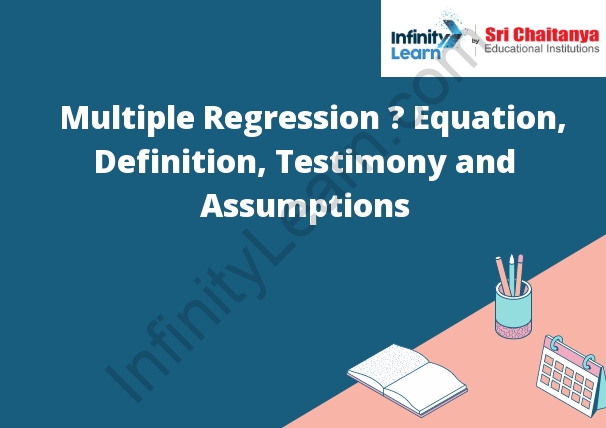
What is Multiple Regression?
Multiple Regression is a set of techniques that describes-line relationships between two or more independent variables or predictor variables and one dependent or criterion variable. A dependent variable is modeled as a function of various independent variables with corresponding coefficients along with the constant terms. Multiple regression requires multiple independent variables and, due to this it is known as multiple regression. In multiple regression, the aim is to introduce a model that describes a dependent variable y to multiple independent variables.In this article, we will study what is multiple regression, multiple regression equation, assumptions of multiple regression and difference between linear regression and multiple regression.
Multiple Regression Equation
There is only one dependent variable and one independent variable is included in linear regression whereas in multiple regression, there are multiple independent variables that enable us to estimate the dependent variable y.
Multiple regression equation is derived by:
Y = a + b1*1 + b2*2 + b3*3……………. bk*k
Here, y is an independent variables whereas b1, b2 and bk
Multiple Regression Analysis Definition
Multiple regression analysis provides the possibility to manage many circumstances that simultaneously influence the dependent variable. The aim of regression analysis is to design the relationship between a dependent variable and multiple independent variables. Let k represent the number of variables and represented by b1, b2, b3, ……, bk. Such an equation is useful for the estimation of value of dependent variable i.e, y when the values of x are determined.
Multicollinearity
Multicollinearity is a term used to describe the case when the inter-correlation of independent variables are high.
Multicollinearity Testimony
-
The high correlation between pairs of independent variables.
-
The magnitude or symbols of regression coefficients do not make substantial sense.
-
Non-significant regression coefficients on significant independent variables
-
The utmost sensitivity of magnitude or sign of regression coefficients leads to the insertion or deletion of an independent variable .
Multiple Regression Assumptions
-
There should be systematic specification of the model in multiple regression. It implies that only relevant variables should be included in the model and the model should be accurate.
-
Assumption of linearity is necessary.
-
The multiple regression model should be linear in nature.
-
Assumption of normality is necessary in multiple regression. It implies that in multiple regression, variables must have normal distribution.
-
Assumption of Homoscedasticity is necessary in multiple regression
-
The variance is constant across all levels of the independent variable.
-
The independent variables are not highly correlated with each other.
There are various terminologies that help us to understand multiple regression in a better way. These terminologies are as follows:
-
The beta value is used in measuring how effectively the independent variable influences the dependent variable. It is measured in terms of standard deviation.
-
R, is the measure of linkage between the observed value and the predicted value of the dependent variable. R Square, or R², is the square of the measure of association which represents the percentage of overlap between the independent variables and the dependent variable. Adjusted R² is an estimate of the R² if you make use of multiple regression models with a new data set.


